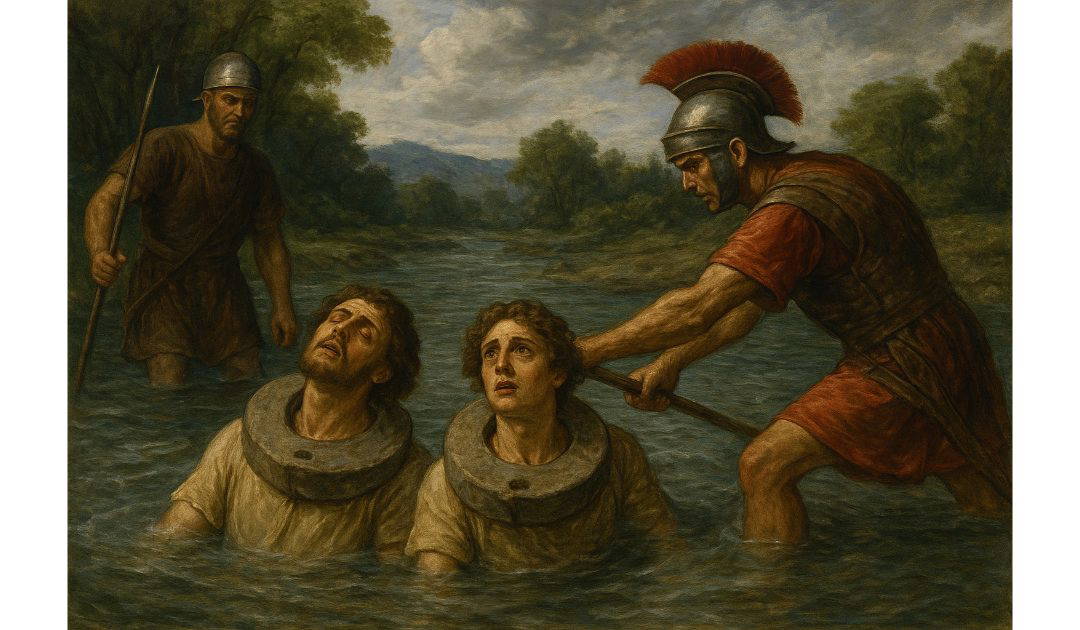The 25th of October is Saint Crispin’s Day. Crispin and Crispinian, also known as Saints Crispin and Crispinian, were twin brothers who became revered figures in Christian hagiography, celebrated as the patron saints of cobblers, tanners, and leather workers. Their story is woven with elements of piety, courage, and faith, and it has inspired various cultural and religious traditions over the centuries.
Saints Crispin and Crispinian were believed to have lived during the 3rd century AD, during the reign of Roman Emperor Diocletian, a time marked by severe persecution of Christians. According to legend, the brothers were Roman noblemen who converted to Christianity. As zealous Christians, they fled to Soissons, in modern-day France, to escape religious persecution and to spread the teachings of Christianity.
Upon settling in Soissons, Crispin and Crispinian adopted the humble trade of shoemaking. They worked tirelessly by day, crafting and repairing shoes, and devoted their nights to preaching the Christian faith. Their dual commitment to manual labour and religious evangelism exemplified the Christian ideal of humility and service.
The brothers were known not just for their skilled craftsmanship but also for their charitable nature. They often provided shoes free of charge to the poor, embodying Christian virtues of kindness and generosity. This combination of work ethic and faith made them beloved figures among the local populace.
Eventually, their Christian activities attracted the attention of the Roman authorities. According to traditional accounts, they were summoned before Rictiovarus, the governor of Belgic Gaul, who was notorious for his ruthless enforcement of anti-Christian edicts. The governor demanded that Crispin and Crispinian renounce their faith and offer sacrifices to the Roman gods.
Despite facing intense torture designed to break their spirits, including whipping, burning with hot irons, and being thrown into the river with millstones around their necks, the brothers remained steadfast in their faith. Miraculously, they survived many of these tortures, which only served to bolster the faith of other Christians.
Legend has it that Crispin and Crispinian fled France to Faversham in Kent. If this is true, it’s difficult to understand how they escaped their captors in France and why they might subsequently return to Gaul for their execution. Ultimately, they were beheaded around the year 286 AD, sealing their status as martyrs for the Christian faith. Although as a Kentish man myself, I want to believe the Faversham connection, I cannot. It’s just that saints are public property. What connection Saint George has with England is totally imaginary.
The martyrdom of Crispin and Crispinian left a profound impact on Christian communities. They were quickly venerated as saints, and numerous churches were dedicated in their honour throughout Europe. Their feast day, known as the Feast of Saints Crispin and Crispinian, is celebrated on the 25th of October.
One of the most famous cultural references to Saints Crispin and Crispinian comes from William Shakespeare’s play Henry V. In the renowned St. Crispin’s Day speech, King Henry V rouses his troops with stirring words before the Battle of Agincourt in 1415, which coincidentally took place on the 25th of October. The speech immortalises the phrase “We few, we happy few, we band of brothers,” and has since become emblematic of camaraderie and valour against overwhelming odds.
Crispin and Crispinian are regarded as the patron saints of shoemakers, leather workers, and related trades. This patronage reflects their profession and the virtues they embodied: diligence, humility, and charity. The tools of their trade, such as awls, knives, and shoes, often appear as symbols associated with their iconography in religious art.
In medieval times, guilds of shoemakers and cobblers would celebrate St. Crispin’s Day with processions, feasts, and religious services. The celebrations were both a form of religious observance and a reflection of professional pride within these crafts. Since my wife Claire’s family are shoemakers from Northampton, that is a better link to Crispin than my Kentish roots.

